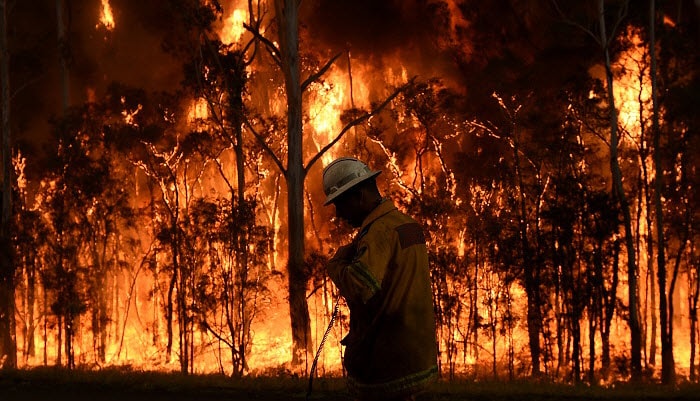Browsing Residential Property Security: Comprehending the Significance of a BAL Report
Browsing Residential Property Security: Comprehending the Significance of a BAL Report
Blog Article
Ensuring Bush Fire Security With Correct BAL Report Analysis
In the realm of bush fire protection, the meticulous evaluation of Bushfire Attack Degree (BAL) records stands as a cornerstone for guarding residential or commercial properties versus the damaging influence of wildfires. With ecological aspects and building qualities playing significant duties in establishing the level of risk, a thorough understanding of BAL ratings ends up being imperative.
Recognizing Bushfire Strike Degree (BAL)
In the realm of bushfire protection, understanding the Bushfire Attack Level (BAL) is paramount for making sure effective reduction techniques. BAL is a system utilized to gauge the prospective risk a building might deal with from a bushfire. It considers aspects such as the type of greenery, the slope of the land, the Fire Danger Index, and the Fire Severity Index. Recognizing the BAL score of a residential or commercial property is essential for home policymakers, building contractors, and owners to apply appropriate procedures to safeguard versus bushfire threats.

Value of BAL Report Evaluation
A crucial element in bushfire protection planning includes the extensive analysis of BAL records to examine the prospective risks and establish suitable mitigation approaches. BAL reports offer essential details about the potential impact of bushfires on a residential property based upon numerous aspects such as plant life type, range to possible fire dangers, and incline of the land. Examining these reports with accuracy is extremely important in creating effective bushfire defense actions customized to the particular danger profile of a home.
Executing Fire Defense Actions
Applying efficient fire protection procedures is important for safeguarding homes in bushfire-prone locations. Among the main methods to improve fire defense is by producing defensible area around buildings. This entails cleaning flammable plants, such as dry leaves and branches, within a certain distance of the building. Furthermore, mounting fireproof roof materials can help in reducing the risk of coal sparking the roof covering throughout a bushfire. Properly maintained screens and gutters are also necessary to avoid debris build-up that might sustain a fire.
Additionally, having a properly maintained and adequate water system, such as a container or swimming pool, can aid firemans in their initiatives to shield the residential or commercial property. It is essential to have a clear emptying plan in position and to make sure that all locals know with the treatments. Additionally, having firefighting tools readily offered, such as hoses and fire extinguishers, can assist in dealing with little place fires before they rise. Generally, carrying out a mix of these fire security measures can substantially increase the possibilities of safeguarding homes during bushfire occasions.
Mitigating Dangers in Fire-Prone Areas
To strengthen properties against bushfire hazards, a tactical focus on mitigating risks in fire-prone areas is necessary. One critical facet of threat reduction is keeping defensible space around buildings by removing combustible plant life, ensuring sufficient spacing in between frameworks and trees, and utilizing fireproof landscaping techniques.
Moreover, constructing or retrofitting buildings with fire-resistant materials and guaranteeing proper maintenance of roofs, rain gutters, and external cladding can significantly enhance the building's durability to bushfires. Exercising a bushfire and establishing emergency plan with all residents, consisting of evacuation procedures and interaction methods, is likewise important in mitigating risks efficiently. By embracing an aggressive approach to take the chance of official site reduction in fire-prone locations, home owners can better shield their possessions and improve total bushfire readiness.
Ensuring Property Safety and Resilience
Making sure the safety and security and resilience of residential or commercial properties in fire-prone areas requires an unwavering commitment to robust preventive steps and critical preparation. Residential or commercial property safety and security starts with executing effective measures to decrease fire threats.
Resilience, on the other hand, includes the capability of a residential or commercial property to withstand and recuperate from a bushfire. This can be improved through the installment of coal guards on vents and windows, making certain that access factors for coal are minimized. Additionally, having a well-balanced emptying strategy and exercising it consistently can considerably raise residential property resilience. Working together with neighbors and neighborhood fire authorities can likewise strengthen the safety and security and resilience of residential properties in fire-prone areas. By proactively resolving these elements, residential or commercial property owners can much better shield their assets and loved ones from the risk of bushfires.
Verdict
To conclude, making certain bushfire protection through appropriate BAL report evaluation is crucial for understanding the degree of danger postured by bushfires and carrying out required fire protection measures. By reducing risks in fire-prone locations and making sure residential property safety and security and resilience, people and neighborhoods can better prepare for and react to bushfire events. It is essential to prioritize fire precaution to protect lives and home in these risky settings.
In the world of bush fire defense, the thorough analysis of Bushfire Attack Level (BAL) reports stands as a cornerstone for guarding properties against the disastrous effect of click for more info wildfires (BAL Report). Recognizing the BAL score of a residential property is critical for residential property owners, contractors, and policymakers to implement ideal steps to guard versus bushfire hazards

BAL records provide vital details about the potential effect of bushfires on a property based on different aspects such as plants type, distance to prospective fire dangers, and slope of the land (BAL Report). Generally, implementing a combination of these fire protection measures can substantially increase the opportunities of guarding buildings throughout bushfire occasions
Report this page